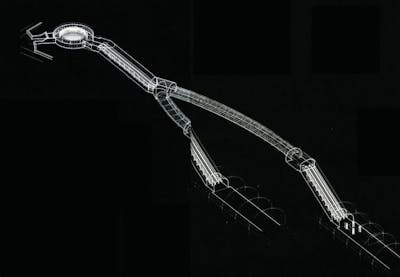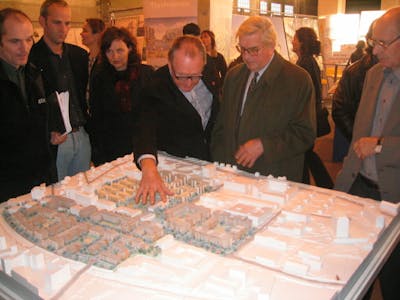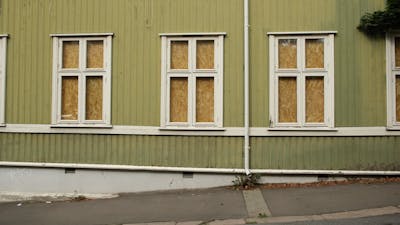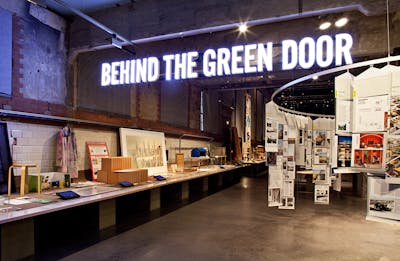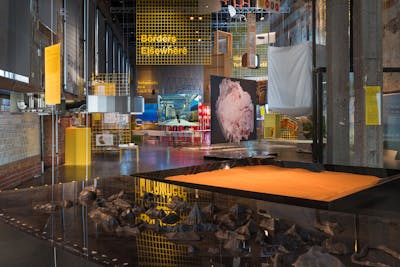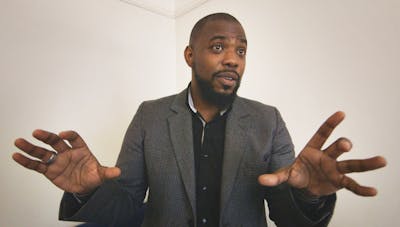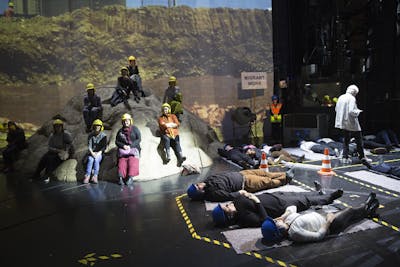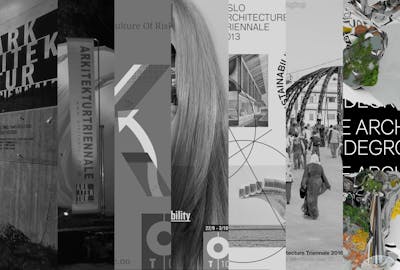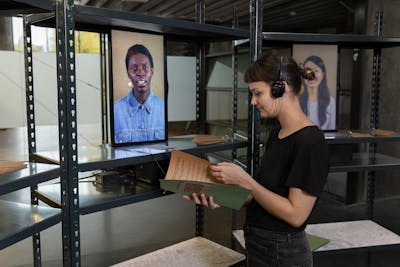NOK: ARKITEKTUR OG NEDVEKST
Scroll down for English
De siste to århundrene har den drivende kraften bak hvordan vi organiserer og utvikler samfunnet vært kravet om økonomisk vekst. Resultatet er en nedprioritering av kollektive og økologiske målsetninger slik at kultur og fellesskap kun blir regnet som små humper på veien til et økt BNP. Antagelsen om at kapitalisme er uungåelig og at markedsøkonomien er den eneste måten å organisere samfunnet på gjør det vanskelig å forestille seg alternative sosiale strukturer og fremtider.
Samtidig blir begrensningene til dette paradigmet stadig mer tydelige: Likhet, livskvalitet og ikke-materielle mål på velstand er fallende, mens temperaturene i verdenshavene stiger og ekstremvær og andre indikatorer på klimatisk sammenbrudd vitner om at veksttankens ideologiske hegemoni ikke kan fortsette.
Covid-19 pandemien er bare en siste påminnelse om at vi ikke kan leve i et system som er basert på en grenseløs utnyttelse av mennesker og natur. Samtidig har pandemien har vist oss at vi er i stand til å bryte inngrodde mønstre og vaner, og åpner dermed for muligheten til å frigjøre oss fra det rådende vekst-paradigmet. I kjølvannet av pandemien har vi mulighet til å skape et radikalt annerledes samfunn som fremmer sosial rettferdighet og mer bærekraftige livsformer. Spørsmålet er hvordan kan et slikt samfunn skapes? Hvordan kan vi utvide oppfattelsen av hva som er mulig og hvilket handlingsrom vi har?
Responsen på Covid-19 har hovedsakelig dreiet seg om kortsiktige løsninger som vedlikeholder dagens samfunnsstrukturer snarere enn å endre dem. Dette er ikke noe nytt. Som med klimakrisen er det bred enighet om behovet for radikal endring – samtidig som globale beslutningstagere ofte insisterer på at denne endringen bare kan skje innenfor de etablerte samfunnsstrukturene. Resultatet er at tanke- og handlingsrommet for hvilke endringer det er mulig å forestille seg blir nøye definert og snevret inn.
Triennalen.
Etter å ha observert disse tendensene, ville vi kuratere en triennale som tok utgangspunkt i at endring ikke bare kan ta utgangspunkt i det som er - for eksempel ved å analysere og forstå klimakrisen – men også i det som kan være: muligheten for mer sosialt rettferdige og demokratiske levekår. Vi foreslo derfor en triennale med temaet nedvekst – en idé og en sosial bevegelse foreslått av akademikere, offentlige talspersoner og aktivister i et opprop mot kravet om økonomisk vekst som grunnlag for all utvikling, og for å undersøke andre måter å organisere samfunnet på.
Det å utforske nedvekst (degrowth) i en triennale for arkitektur og byutvikling virket særlig spennende da det gjerne er i byrom og gjennom byenes utforming at kampen mellom frigjøringsbevegelser og den dominerende, kapitalistiske verdensordenen kommer best til uttrykk. I byene har vekst-paradigmet har manifestert seg gjennom privatisering, regulert forbruk og eiendomsspekulasjon. Urbaniseringen er også en av hovedsynderne i den akselererende utarmingen av jordens ressurser. Men det er også i byene at mennesker mobiliserer seg i gater og på torg for å kreve forandring gjennom det kulturteoretikeren Henri Lefebvre kalte «mulighetenes politikk». Mot dette bakteppet stilte OAT 2019 spørsmålet: Hvordan former vi byene våre når mennesket og naturen har førstepriroritet?
Lite visste vi i 2017 at de årene som ledet opp mot triennalen skulle bli preget av verdensomspennende hendelser som gav ideen om nedvekst økt relevans. Kunne dette konseptet være løsningen på den sosio-økologiske krisen verden stod ovenfor?
Dette spørsmålet peker på hvordan arkitekturtriennaler slites mellom tilsynelatende konfliktfylte prioriteringer i forhold til å skulle tilfredsstille både akademiske og profesjonsorienterte krav. Når det praktiserende feltet ønsker mer «relevans», betyr det ofte at de søker konkrete løsninger og svar på hva som skjer og hva vi kan gjøre. Dagens triennaler utgjør derimot diskursive miljøer der formidlingen av arkitektur inngår i et bredere fokus på vitensproduksjon konsentrert mot å undersøke problemstillinger rundt hvorfor ting er som de er og hva som burde gjøres. Selv om dette fokuset ikke automatisk lar seg oversette til praktiske løsninger, gir triennaleformatet frihet til å utforske sosiale, politiske og kulturelle forhold på en annen måte enn den prosjektorienterte dag-til-dag-praksisen de fleste arkitekter arbeider med. Med andre ord kan man her utvikle arkitektur som samfunnet har behov for og ikke bare det som markedet etterspør. Følgelig ville vi at triennalen skulle utvide samtidens forståelse av hva arkitektur er og gjør. Ved å fokusere på kunstneriske og performative innslag og praksiser, heller enn plantegninger og modeller av bygninger, fremmet vi arkitektur ikke som «en ting» som skal oppnåes, men som en «spekulativ øvelse», med potensial til å utforske og forestille seg alternative urbane fremtider.
Akkurat som med ideen om nedvekst, er disse alternativene ikke ferdig utformet. Men nettopp denne mangelen, eller underutviklingen av ideene, gir et mulighetsrom hvor det som ofte blir sett på som umulig kan utfordres. Denne tilnærmingen må ikke misforstås som det samfunnsgeografen David Harvey kalte «romantiseringen av uoppfylt lengsel og begjær». Fremfor å bare feire at fremtiden er åpen, var OAT 2019 en arena for å eksperimente, fremme alternativer og konstruere nye fremtider, for så å studere deres implikasjoner for og muligheter for implementering i praksis.
Ett eksempel på dette er triennaleprosjektet Fremtidsfabrikken (The Factory of the Future) signert den britiske performance-kunstneren Zoe Svendsen. Prosjektet undersøkte hvordan en åpen, kollektivt orientert tilnærming til klimakrisen kan bli utviklet gjennom kunstneriske metoder. Med fokus på Bjørvika og Grønland involverte prosjektet lokalmiljø, planfaglig kompetanse, arkitekter og utviklere for å forestille seg disse stedene i en post-kapitalistisk, post-fossil fremtid. Forskjellige visjoner for dette endrede samfunnet ble skapt i samarbeid med lokale aktører og innbyggere. Byplanleggere, arkitekter og eiendomsutviklere fikk deretter i oppgave å utforme det fysiske miljøet basert på disse visjonene. Skuespillere, som hadde fulgt prosjektet fra start, utviklet og fortalte til sist historier om hvordan innbyggernes hverdag utartet seg i et slikt endret samfunn. Disse historiene ble filmet og fremvist under triennalen.
For enkelte kritikere var dette fokuset på utopiske fremtider provoserende. I en tid der samtiden krever øyeblikkelig handling, hvorfor produserte triennalen fiksjon fremfor løsninger? Dette skiftet fra en diskusjon rundt problemer til en rundt løsninger, fra politisk kritikk til pragmatisk politikk, er en enkel strategi for å stigmatisere alternativer som utopiske (det vil si som naive og impotente) – en unnskyldning for å fortsette i samme spor som før.
Dette fører til at det vi i dag oppfatter som mulig eller realistisk kun tar utgangspunkt i dagens økonomiske struktur, og alternativer som opererer på utsiden av denne (slik som nedvekst) blir sett på som utopiske i negativ forstand. På samme måte blir visjoner for fremtiden i arkitektur og byutvikling ofte uttrykt gjennom hva vi kan kalle «status quo scenarioer». Disse bygger på ideen om at fremtiden skapes gjennom kontinuitet og justeringer av dagens situasjon, og ikke brudd med den.
Ved å utforske en mer transformativ tilnærming, fremmet Fremtidsfabrikken scenarioer som er vanskelige å oppnå gjennom eksisterende strukturer og hvor radikale endringer derfor blir sett på som nødvendig. Prosjektet viste hvordan det å se for seg hvordan det er å leve i en radikalt endret verden kan skape nye perspektiver som gjør det mulig å forestille seg andre måter å gjøre ting på. Dette var ikke utopisk i den forstand at man trakk seg tilbake for å bygge opp et idealistisk drømmesamfunn uten forankring i virkeligheten. For eksempel, så var mange av scenarioene som ble utviklet i Fremtidsfabrikken allerede virkelighet: en tangfarm deltakerne hadde forestilt seg utenfor Operaen i Bjørvika fantes allerede på en av øyene i Oslofjorden; forestillingen om gjenbruks- og reparasjonssupermarkeder eksisterer for øyeblikket som små, alternative initiativer; og forslaget om en ikke-kommersiell boligsektor er under utvikling i form av en tredje boligsektor i Oslo.
Dette var kjente tiltak, men selv om disse initiativene allerede har blitt prøvd ut, så har ikke dette skjedd på et strukturelt nivå og de forblir derfor marginale alternativer til den dominerende samfunnsordenen. Ved å løfte frem disse alternativene stilte prosjektet spørsmålstegn ved hvorfor slike initiativer må operere på tross av og ikke i kraft av dagens utviklingsprosesser. Det handlet altså om å bruke ideen om en endret virkelighet til å sette spørsmålstegn ved den virkeligheten vi lever i, og dermed insistere på muligheten for endring.
I stedet for å vende seg vekk fra pragmatikk og den politiske agendaen, utviklet prosjektet dermed et bredere perspektiv som satt fokus på sentrale, men ofte oversette, spørsmål om samfunnet og om hva sosial transformasjon innebærer.
Ideer og metoder utarbeidet i Fremtidsfabrikken er nå i ferd med å implementert som en del av Norges distriktspolitikk: I forlengelse av triennalen har Doga initiert prosjektet «Rurale fremtider» der de arbeider med unge voksne for å utvikle alternative fremtidsscenarioer for distrikts-Norge.
Ordet «scenario» kommer fra den tradisjonelle italienske teaterformen “commedia dell’arte” der skuespillerne bygger ut stykkene gjennom improvisasjon og samarbeid. I samme ånd ville vi med OAT 2019 åpne for det uforutsette, der forandring ikke er et «svar» eller en «løsning», men en tilblivelse av noe som fremdeles er udefinert. Vi ville skape en arena for å utforske flere mulige fremtider, heller enn å peke ut nøyaktig hvilken fremtid vi skulle diskutere.
Mens Covid-19 fortsetter å rokke ved våre forestillinger om hva dagliglivet er og kan være, klarer vi å se for oss en bred, radikal samfunnsendring? Det svaret har hverken vi eller noen andre. Men tidligere utenkelige tiltak, som nasjonalisering av store, private franske selskaper og ideen om fast grunnlønn i USA, er nå satt på dagsordenen. Det er allikevel vanskelig å ta pandemien til inntekt for en dreining fra vekst til et fokus på livskvalitet. Riktignok har verden giret ned produktiviteten sin, men ikke uventet har pandemien ført med seg økende sosial ulikhet. Endringen til et nedvekst samfunn, derimot, må være planlagt og ha likhet og en rettferdig fordeling av godene som et sentralt fundament.
Hvordan vil verden se ut etter Covid-19? Det vet ingen. Men ett er sikkert: Selv om alle forsøk på å forandre verden kan gjøres til gjenstand for kritikk på ulike vis, er det drømmer, visjoner og vår forestillingsevne som gjør det mulig å diskutere fremtidens samfunn.
ENOUGH: THE ARCHITECTURE OF DEGROWTH
A becoming of something
Text by Matthew Dalziel and Cecilie Sachs Olsen
For the last two centuries, the driving force behind how we cultivate and organize our societies has been the pursuit of economic growth. The desire for infinite growth has discounted common and ecological goals, measuring acts of culture and community as mere bumps in GDP. The perceived inevitability of capitalism and the market economy as the basic organizational structure of society makes it hard to imagine alternative social structures and futures.
Yet the limits to this paradigm have become abundantly clear. As equality, wellbeing and non-monetary measures of prosperity falter, rising sea temperatures, extreme weather and other indicators of climate breakdown converge around the conclusion that the days of growth’s predominance are running out. The Covid-19 pandemic has reasserted that we cannot continue living by a system rooted in the exploitation of people and nature. At the same time, the pandemic’s disruption of business-as-usual opens new pathways in the ongoing struggle to emancipate ourselves from the growth paradigm. In the aftermath of the pandemic, we have the opportunity to transition towards a radically different kind of society that better promotes social justice and the sustainability of life. But how can such a radically different society come about? How do we expand the realm of what is considered possible and broaden our scope of action?
The dominant response strategies to address Covid-19 seem to narrow our scope of action by looking to short term solutions, aiming to protect and maintain existing systems rather than changing them. This is nothing new. In response to the climate crisis there is a strong consensus that we have to change radically - but global powers tend to insist that this change can only happen within the contours of the existing system. The result is less of an empowering debate around a wide range of alternatives, and more a carefully stage-managed process with clearly defined parameters of what is open for debate.
The Triennale
Observing these tendencies, we started toying with the idea of curating an architecture triennial that started from the position that in order to bring about change we need to attend more closely not only to what is – focusing on analysing and understanding processes of capitalist accumulation, restructuring and impacts of crisis - but also to what could be: the potential for more socially just, democratic and emancipatory spaces and ways of living. Hence, we proposed an architecture triennial focusing on degrowth - an idea and social movement proposed by scholars, public intellectuals and activists as a powerful call to reject the obsession with economic growth and seek out alternative ways of organizing society.
Exploring degrowth within a festival of architecture and urbanism seemed specifically interesting since urban space and form are where the struggle between emancipatory movements and dominant capitalist orders are made most explicit. Cities are the terrain where the growth paradigm has been materialized through increasing privatization, enclaves of regulated consumption, and real estate speculation. Urbanization processes are also a major player in the world’s socio-ecological predicament, as the main culprit of the world’s accelerating resource depletion. At the same time, the city is the place where people mobilize in public squares and streets to make visible their desires for change, fostering what the cultural theorist Henri Lefebvre terms a “politics of the possible”. Against this background, the 2019 Triennale cast an urgent question into relief: How will cities be formed when it is human and ecological flourishing that matter most?
Little did we know in 2017, when we came up with this concept for the Triennale, that the years leading up to the festival itself would be marked by global events and movements that gave the idea of degrowth a renewed sense of relevance and urgency - could degrowth be the solution to the socio-ecological crises we were facing?
This question of relevance points to how architecture triennials are torn between seemingly conflicting priorities in attempting to meet both intellectual and professional demands. When practitioners call for ‘greater relevance’, they are often looking for immediate answers: They want to know about ‘what’s going on’ and ‘what to do’. Contemporary architecture biennials and triennials, tend to work more as diagnostic tools and discursive environments in which the practice and display of architecture is part of a broader project of research and knowledge production concerned with ‘why it is like that’ and ‘what ought to be done’. While the findings of such research do not necessarily translate easily into good practice guides, biennials and triennials provide freedom for architects to engage with changing social, political, and cultural realities beyond the constraints of their day-to-day work by opening up new public spaces for architectural thought outside the dominant space of the market. Accordingly, we wanted the Triennale to expand the ideas of what architecture is and does. Focusing on presenting artistic and performative interventions and practices rather than architectural plans and models, the Triennale positioned architecture not as a ‘thing’ to be achieved but as a ‘speculative exercise’ with the potential to explore and imagine alternative urban futures that better encompass not only a variety of people’s interests and values, but also the interests and perspectives of future generations, both human and non-human.
Like the idea of degrowth, these alternatives are not fully formed. But exactly this lack, or underdevelopment of the ideas, provides spaces where what is currently thought of as impossible can be expanded. This approach should not be mistaken for what urban geographer David Harvey critiques as a “romanticism of perpetually unfulfilled longing and desire”. Instead of simply celebrating the openness of the future, the 2019 Triennale was a space for conducting experiments, for proposing alternative possibilities and constructing new futures, and then studying their implications and consequences on the ground.
For example, one of the projects that we developed as part of the
Triennale was The Factory of the Future by the British performance maker
Zoe Svendsen. The project explored how open-ended and collaborative
future scenarios responding to the climate crisis could be developed
through artistic methods. Focusing on Bjørvika and Grønland, the project
brought together local communities, planners, architects and developers
to imagine the look, feel and function of these places in a post
capitalist and post fossil fuel future. This process took place in three
stages: Firstly, residents and local communities were encouraged to
dream about the transformations they would like to see in their
neighbourhood. Secondly, these dreams were developed into a series of
baseline scenarios. The scenarios informed several workshops where
planners, architects and developers imagined the transformation of the
existing social and economic infrastructure and built structures of Oslo
in order to accommodate the envisioned changes. Finally, professional
actors - who had followed the process from the start – improvised
stories about what the everyday would be like living in these
transformed social, economic and built structures. The stories were
filmed as a series of video portraits and were displayed as an
installation throughout the Triennale.
For some critics this focus on producing utopian futures was deeply
provoking: in a time of emergency that calls for action, what was the
Triennale doing presenting utopian fictions rather than concrete
solutions? This change of register, from a discussion of problems to one
of solutions, from political critique to pragmatic politics, is an
effective tool to expose alternatives as ‘utopian’ (read: naïve or
impotent) and – ultimately - continue business as usual. Consequently,
what is possible today is predominantly constituted of current economic
conditions, and alternatives, such as degrowth, which operates beyond
these conditions, is often treated as unrealistic and utopian in a
derogatory sense. Accordingly, the dominant mode in which visions for
the future are expressed in urban development and planning is through
the use of what are sometimes called ‘preserving scenarios’. These
scenarios depict images of the future built on today’s societal
structures, asking how a specific target can be reached by simply
adjusting the present situation.
Exploring a more transformative approach, The Factory of the Future
promoted future scenarios that are difficult to achieve within existing
structures so that major societal changes are seen as necessary. By
cultivating such “transformative scenarios”, the project attempted to
show how the process of fleshing out the reality of living in a
radically different environment yields insights that in turn enable
other ways of doing things. This is not utopian in terms of escaping the
present and simply building up an ideal society from scratch. Rather,
it is a process of creating a different world in confrontation with the
already existing one. Utopia in this sense uses the idea of a
transformed society to question the present and in so doing insists on
the possibilities for transformation. For example, some of the future
scenarios imagined in The Factory of the Future were already a reality: a
seaweed farm imagined as part of the harbour of Oslo, already existed
on one of the islands in the fjord; repair and re-use markets exist as
small shops; ideas of a non-commercial housing market is already being
developed as “third-sector housing”. Yet, although these scenarios were
already tried and tested, they were not done so at a systemic level -
they currently swim against the tide of neoliberal systems and so remain
outliers. The question, then, is what stops these alternatives from
being normal? In contrast to adjusting the current condition to reach a
specific target, this question asked how a target could be reached when
the prevailing structure blocks necessary changes. This way, the project
resisted accepting possibilities as they currently appear in order to
extend the boundaries of what is possible. This need not entail turning
away from pragmatic and policy agendas but may help to develop a wider
vision that can provide a context for debates about the future, raising
fundamental and often neglected questions about society, processes of
social transformation and what they might become.
Several workshop participants accordingly confirmed that being part
of The Factory of the Future gave them new ideas and perspectives that
would inform their working practices: a social worker said she wanted to
use the format of the project to work with young adults on their
visions for Oslo; a planning consultant suggested that he would try to
sell the scenarios developed in the project to his clients; an urban
planner reported that she would implement similar participatory methods
in the planning processes she was involved in; and a Greenpeace official
saw the project as a great inspiration for working out new strategies
for the organisation. This way, The Factory of the Future, did not
necessarily invent new realities, but laid new ground for political
action.
Following the 2019 Triennale, Design and Architecture Norway has
initiated a project that applies the future scenario methods developed
in The Factory of the Future in the project ‘Rural Futures’ (‘Rurale
framtider - Scenarier for Distrikts-Norge’). Working with young people,
the aim of the project is to develop toolkits for how such future
scenario methods can be used and implemented in a municipal context to
develop a more inclusive and innovative urban development.
The term ‘scenario’ originates from the traditional Italian theatre
art form ‘commedia dell’arte’, where it refers to a vaguely defined play
to be fleshed out by the actors through improvisation and
collaboration. In similar vein the 2019 Triennale opened up for the
unplanned, considering change not as a ‘solution’ or an ‘answer’, but as
a becoming of something yet to be defined. It attempted to create an
empowering arena for exploring a wide range of possible futures, rather
than deciding what kind of future is open for debate.
As COVID-19 continues to shake our daily lives, will we be able to
respond in ways that promote broader and more radical change? The answer
remains to be seen, but some measures have already been proposed that
under normal circumstances would have been almost unthinkable, including
the nationalization of private enterprise in France and universal basic
income in the US. Yet the global slowdown caused by Covid-19 does not
reflect the ethical and political commitment to development predicated
on prioritizing well-being over profit. So far the pandemic has
disproportionately affected the most vulnerable in society; not only the
very old and young, but also workers who don’t have the option of paid
remote work and so must face the trade-off between risky infection at
work or staying at home awaiting unpayable bills. Globally, refugees are
trapped in inadequate facilities and health systems are collapsing.
Something tells us the rich aren’t struggling to find hand sanitizer and
toilet paper, or dying in hospitals from lack of treatment. This is not
degrowth. A degrowth transformation would be intentional and
proactively pursued, and have justice and equality at its core.
What would the world look like after COVID-19? No one knows. Yet one
thing is clear. While any attempt to change the world can be criticized
in various ways, the very existence of ideas, visions, dreams and
imaginations for alternatives make it possible to have a debate on the
future of our societies.

